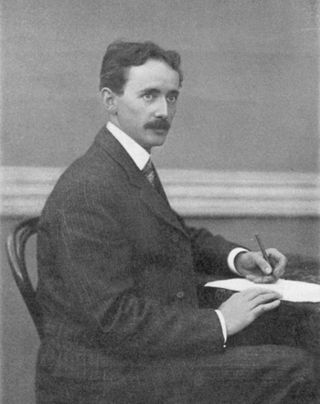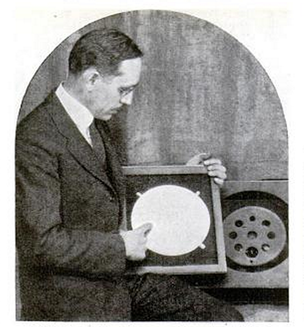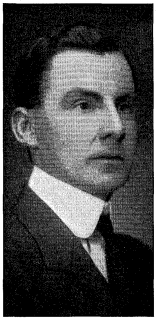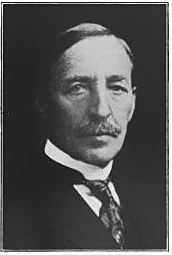
James Watt was a Scottish inventor, mechanical engineer, and chemist who improved on Thomas Newcomen's 1712 Newcomen steam engine with his Watt steam engine in 1776, which was fundamental to the changes brought by the Industrial Revolution in both his native country Great Britain, and the rest of the world.

Thomas Alva Edison was an American inventor and businessman. He developed many devices in fields such as electric power generation, mass communication, sound recording, and motion pictures. These inventions, which include the phonograph, the motion picture camera, and early versions of the electric light bulb, have had a widespread impact on the modern industrialized world. He was one of the first inventors to apply the principles of organized science and teamwork to the process of invention, working with many researchers and employees. He established the first industrial research laboratory.
This is a timeline of temperature and pressure measurement technology or the history of temperature measurement and pressure measurement technology.

A pyrometer, or radiation thermometer, is a type of remote sensing thermometer used to measure the temperature of distant objects. Various forms of pyrometers have historically existed. In the modern usage, it is a device that from a distance determines the temperature of a surface from the amount of the thermal radiation it emits, a process known as pyrometry, a type of radiometry.
Celluloids are a class of materials produced by mixing nitrocellulose and camphor, often with added dyes and other agents. Once much more common for its use as photographic film before the advent of safer methods, celluloid's common present-day uses are for manufacturing table tennis balls, musical instruments, combs, office equipment, fountain pen bodies, and guitar picks.
Jean Amédée Hoerni was a Swiss-born American engineer. He was a silicon transistor pioneer, and a member of the "traitorous eight". He developed the planar process, an important technology for reliably fabricating and manufacturing semiconductor devices, such as transistors and integrated circuits.

Frederic Eugene Ives was a U.S. inventor who was born in Litchfield, Connecticut. In 1874–78 he had charge of the photographic laboratory at Cornell University. He moved to Philadelphia, Pennsylvania, where in 1885 he was one of the founding members of the Photographic Society of Philadelphia. He was awarded the Franklin Institute's Elliott Cresson Medal in 1893, the Edward Longstreth Medal in 1903, and the John Scott Medal in 1887, 1890, 1904 and 1906. He was elected to the American Philosophical Society in 1922. His son Herbert E. Ives was a pioneer of television and telephotography, including color facsimile.

Daniel McFarlan Moore was a U.S. electrical engineer and inventor. He developed a novel light source, the "Moore lamp", and a business that produced them in the early 1900s. The Moore lamp was the first commercially viable light-source based on gas discharges instead of incandescence; it was the predecessor to contemporary neon lighting and fluorescent lighting. In his later career Moore developed a miniature neon lamp that was extensively used in electronic displays, as well as vacuum tubes that were used in early television systems.
Moulton B. "Molt" Taylor was an American aeronautical engineer famed for his work designing, developing, and manufacturing on a small scale one of the first practical flying cars, the Aerocar.

A chart recorder is an electromechanical device that records an electrical or mechanical input trend onto a piece of paper. Chart recorders may record several inputs using different color pens and may record onto strip charts or circular charts. Chart recorders may be entirely mechanical with clockwork mechanisms, electro-mechanical with an electrical clockwork mechanism for driving the chart, or entirely electronic with no mechanical components at all.
Edward E. Simmons Jr. was an electrical engineer and the inventor of the bonded wire resistance strain gauge.

John Erik Bertrand Johnson was a Swedish-born American electrical engineer and physicist. He created the first cathode-ray tube oscilloscope and detailed a fundamental source of random interference with information traveling on wires, now called Johnson-Nyquist noise.

John Alfred Prestwich was an English engineer and inventor. He founded JA Prestwich Industries Ltd in 1895 and was a pioneer in the early development of cinematography projectors and cameras. The company also manufactured famous JAP motorcycle engines.

William Harold Clark was an English-born Canadian businessman and politician. He was a municipal councillor in Edmonton, Alberta.

Morris E. Leeds was an American electrical engineer known for his many inventions in the field of electrical measuring devices and controls.

John Findley Peters was an American electrical engineer known for his invention of the Klydonograph. He began his career at Westinghouse Electric in 1904. He received the IEEE Edison Medal for "contributions to the fundamentals of transformer design, his invention of the Klydonograph, his contributions to Military Computers and for his sympathetic understanding in the training of young engineers". He was also awarded the Franklin Institute's Edward Longstreth Medal in 1929.

Walter Otheman Snelling was a chemist who contributed to the development of explosives, ordnance, and liquefied petroleum gas.

Leason Heberling Adams was an American geophysicist and researcher. His principal achievement was his research on the properties of materials exposed to very high pressures, which he used to derive information on the nature of the Earth's interior. He received the William Bowie Medal of the American Geophysical Union in 1950 for his work.

Edwin Ruud was a Norwegian-American mechanical engineer and inventor who immigrated to the United States where he designed, sold, and popularized the tankless water heater. He was the founder and President of Ruud Manufacturing Company, now a division of Rheem Manufacturing Company.
Ervin George Bailey was an American mechanical engineer, founding president of Bailey Meter Company, manufacturer of industrial meters and controls, and inventor. He was recipient of the 1942 ASME Medal, and served as 67th president of the American Society of Mechanical Engineers.












